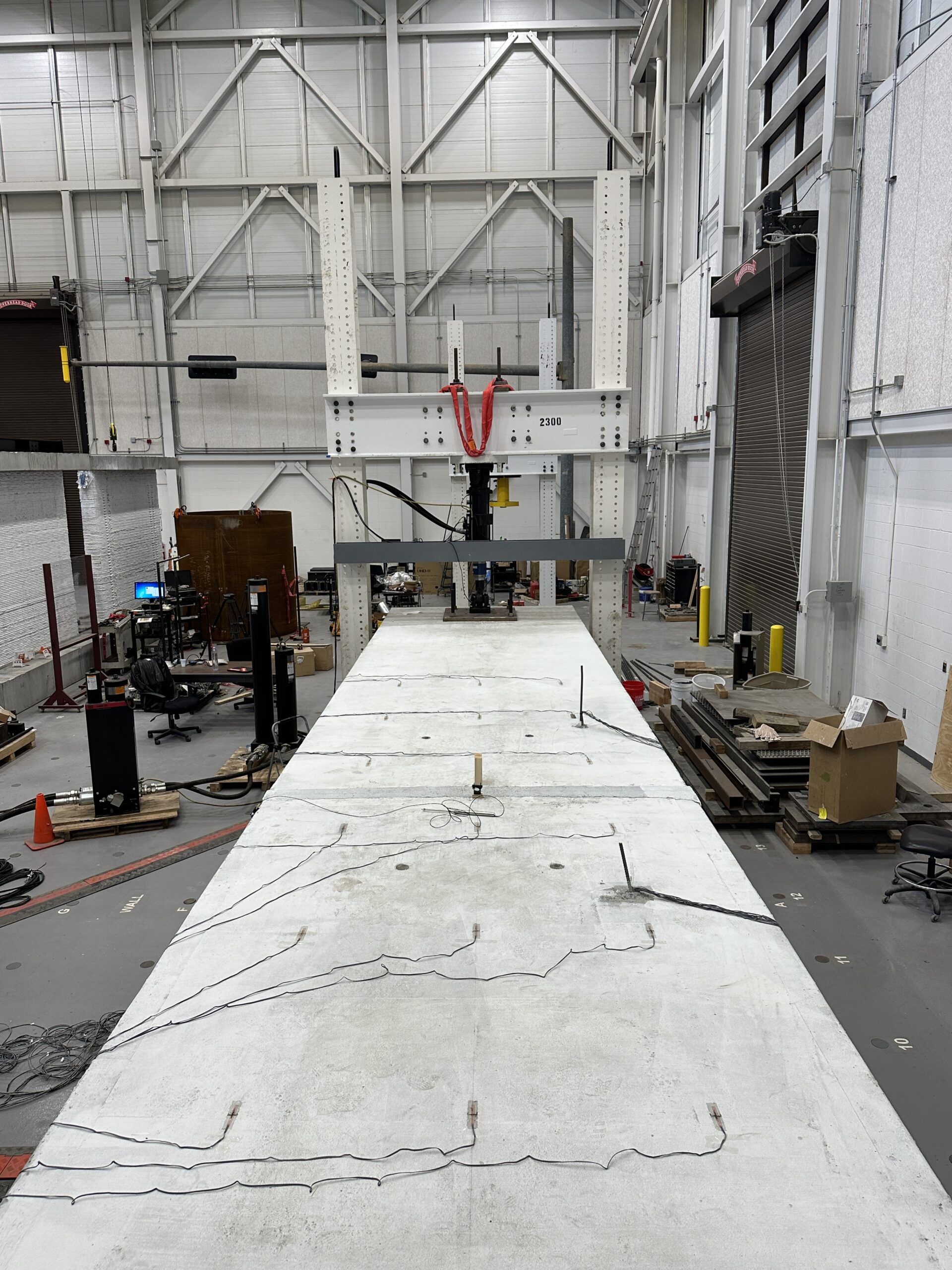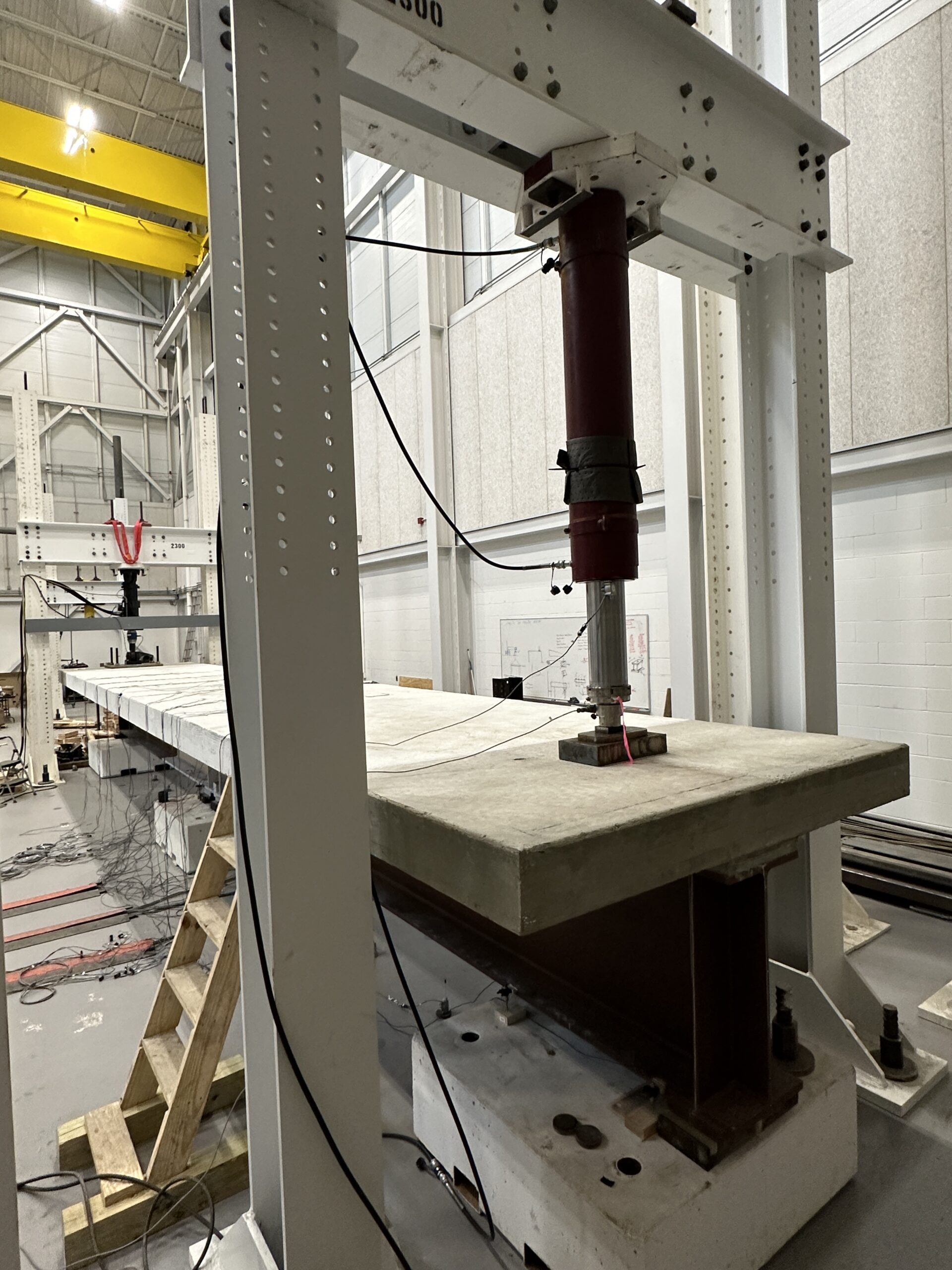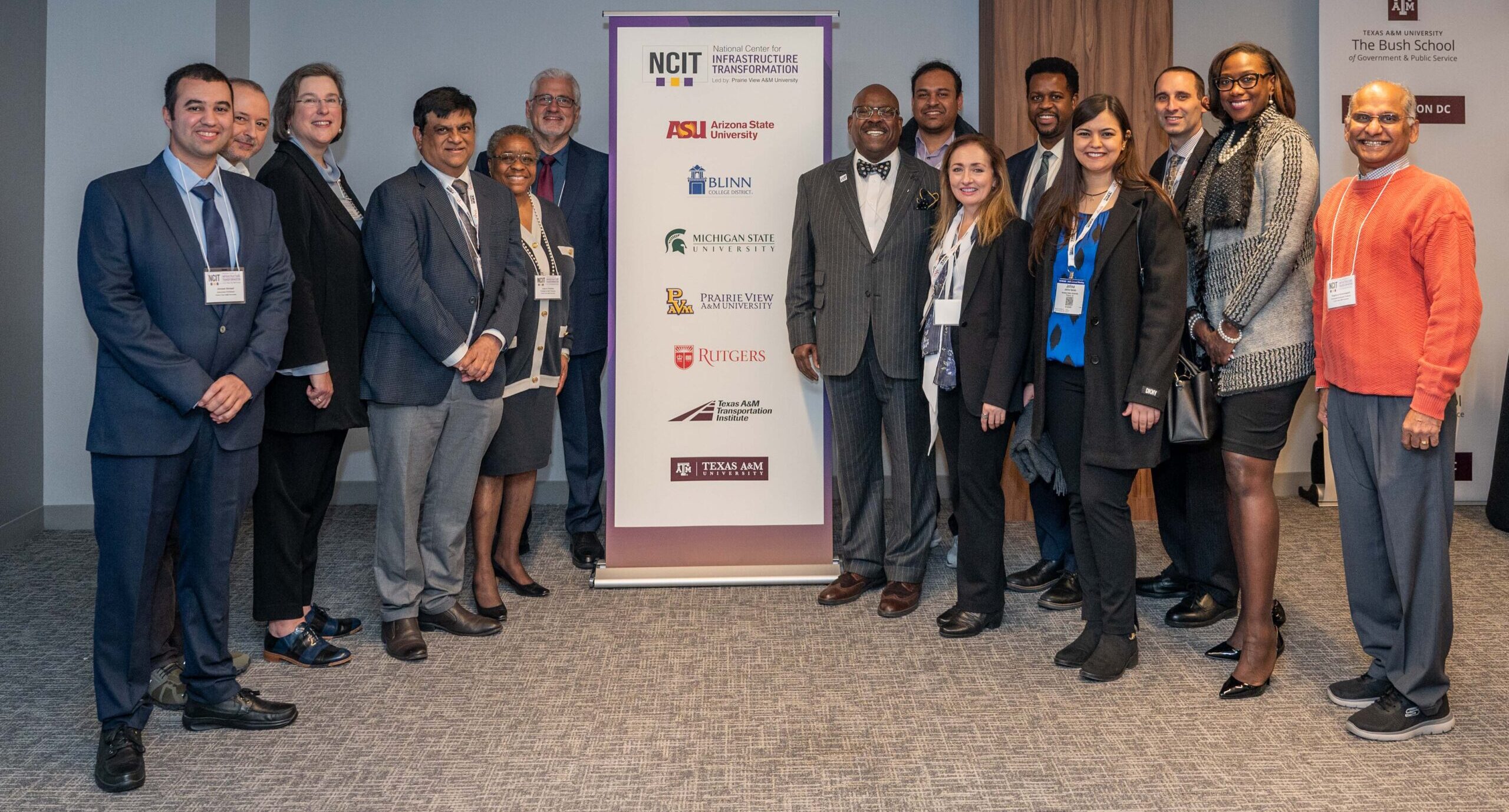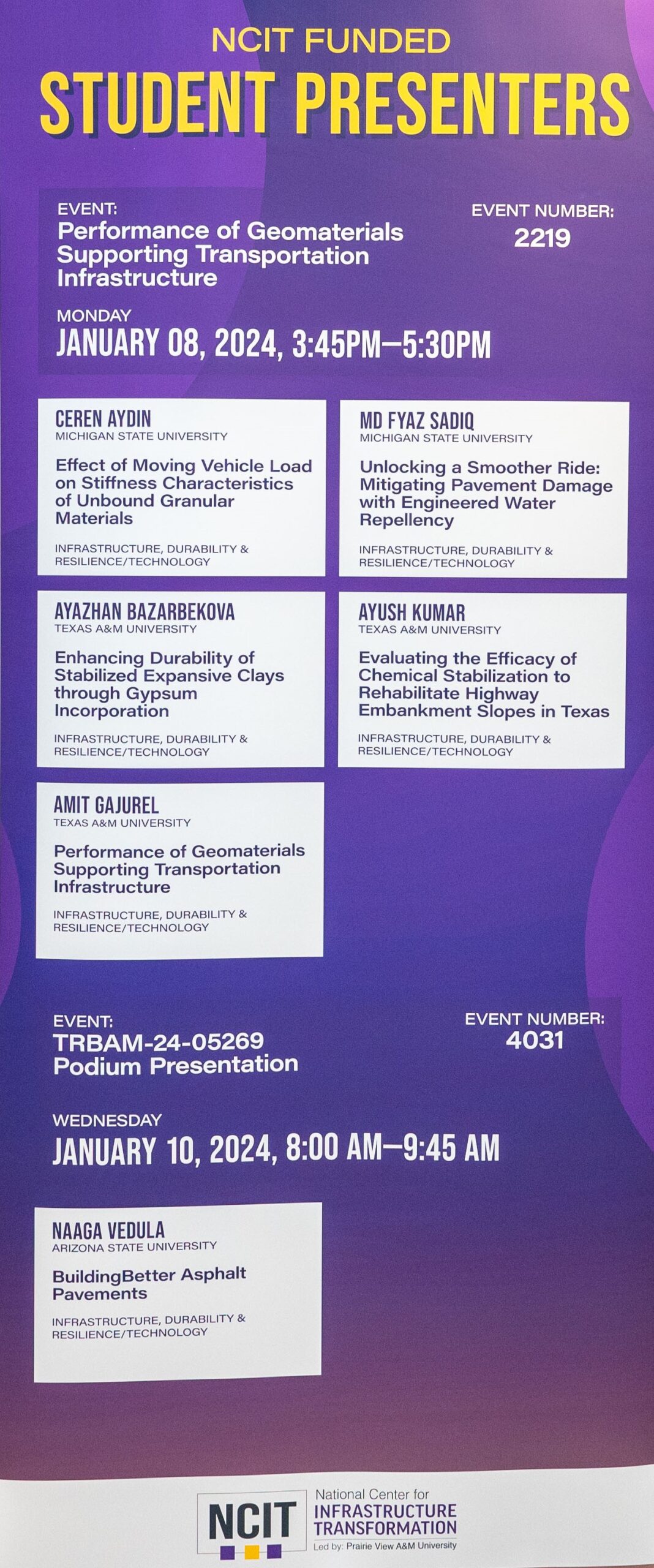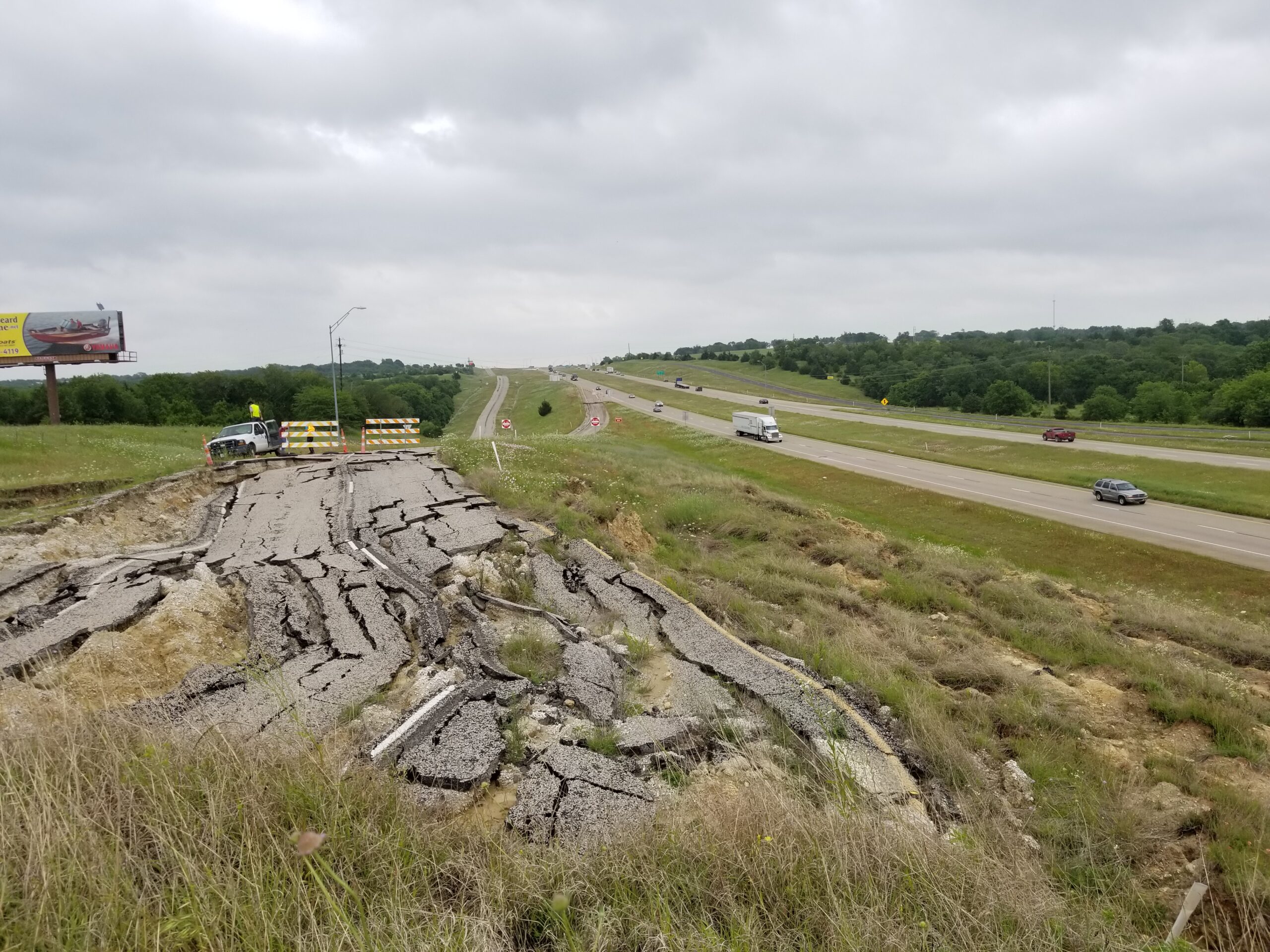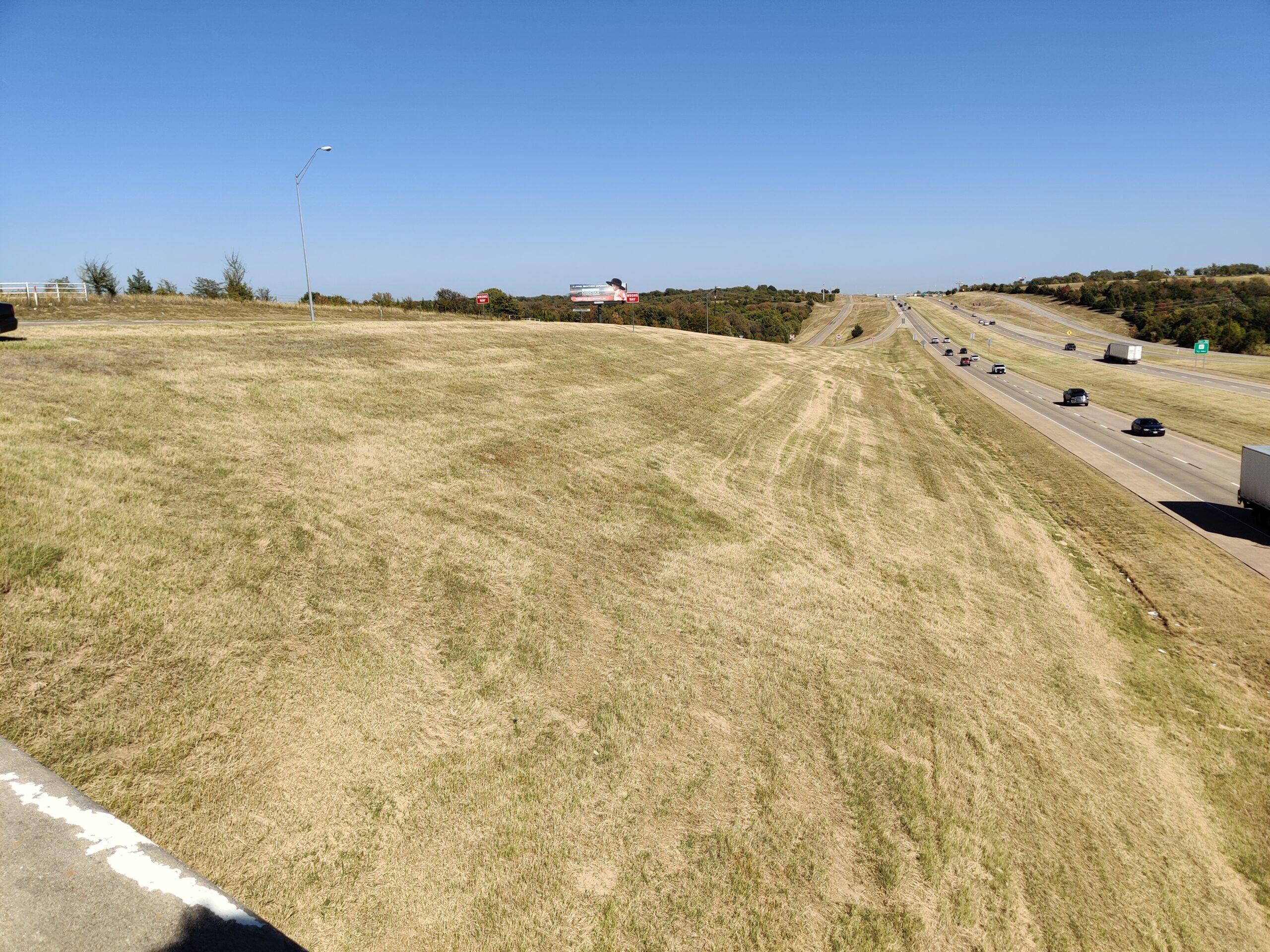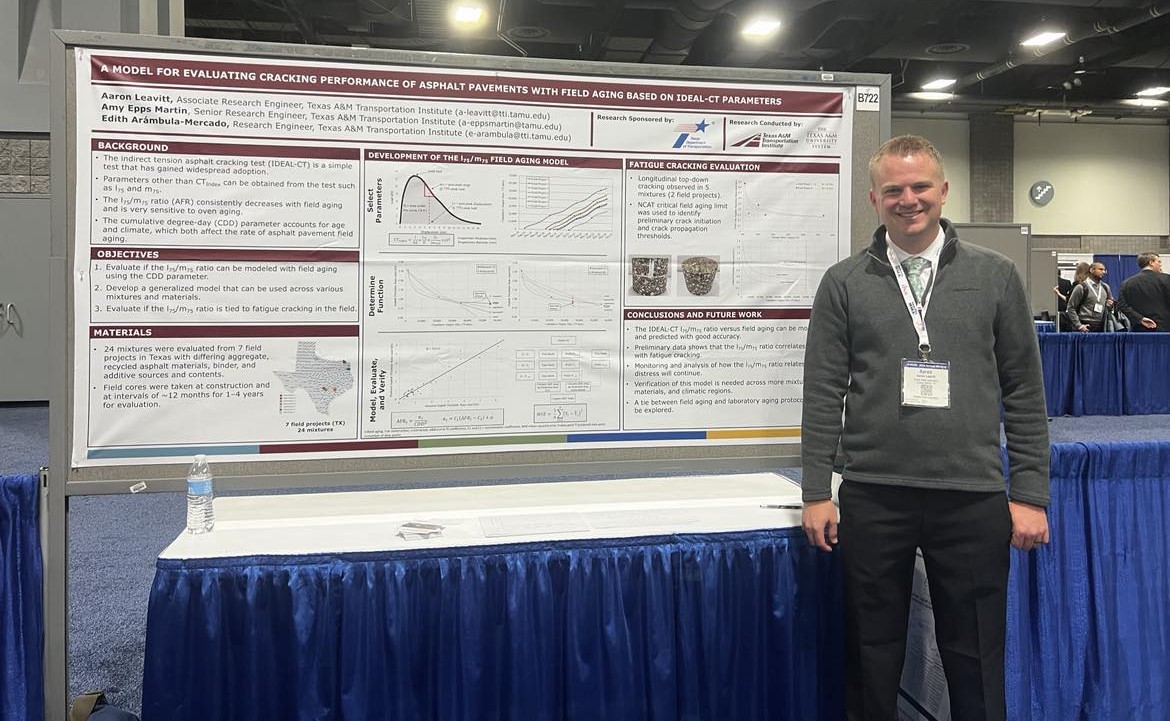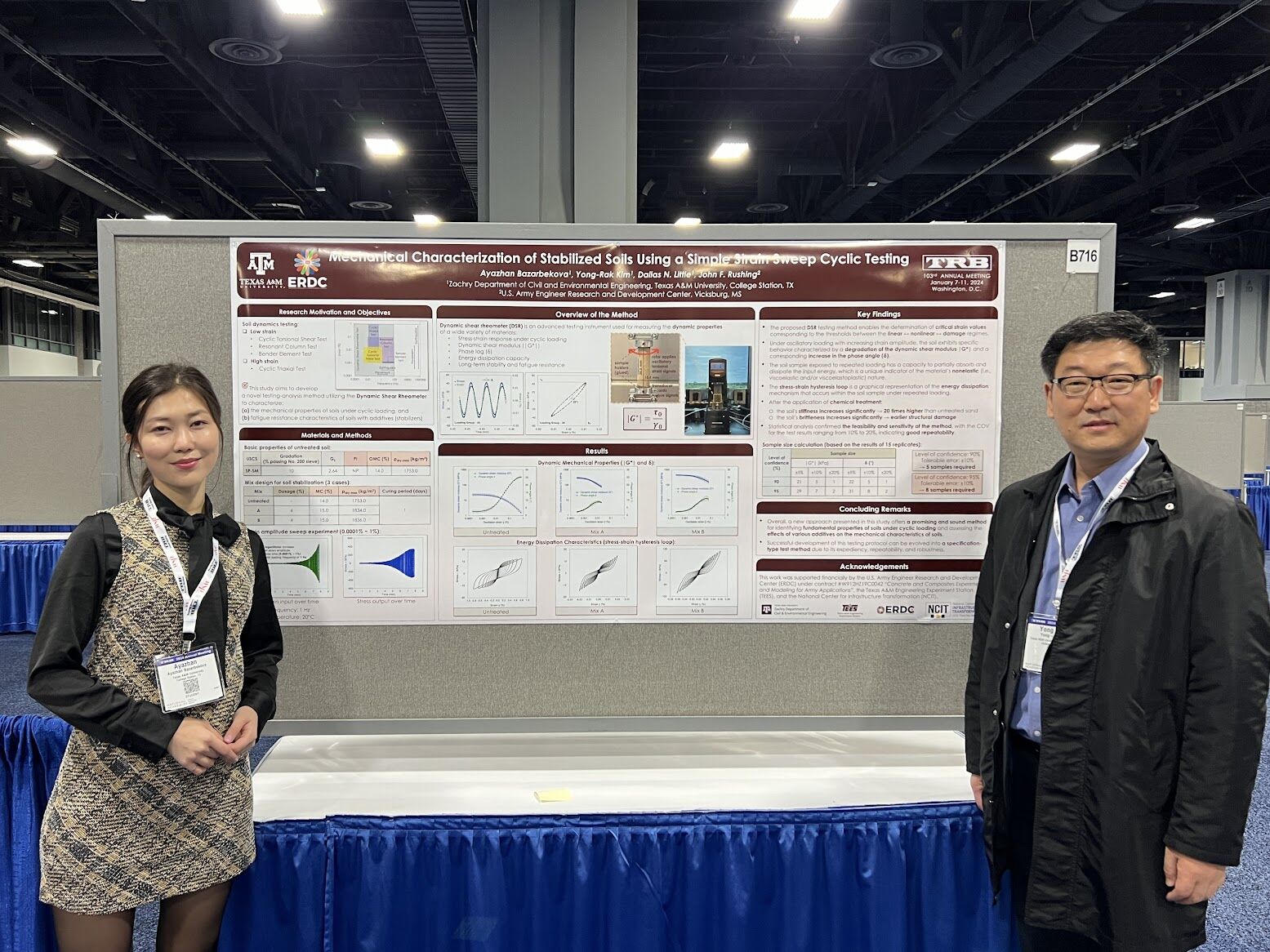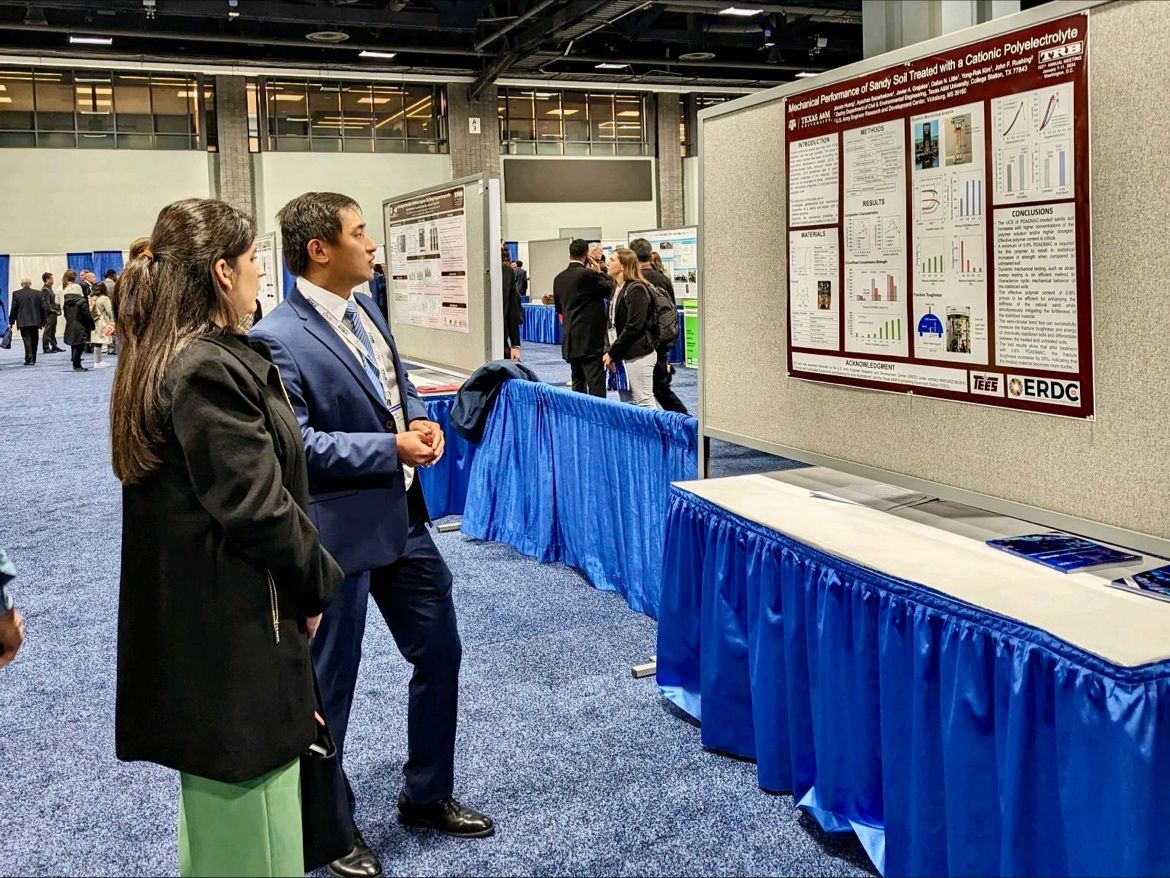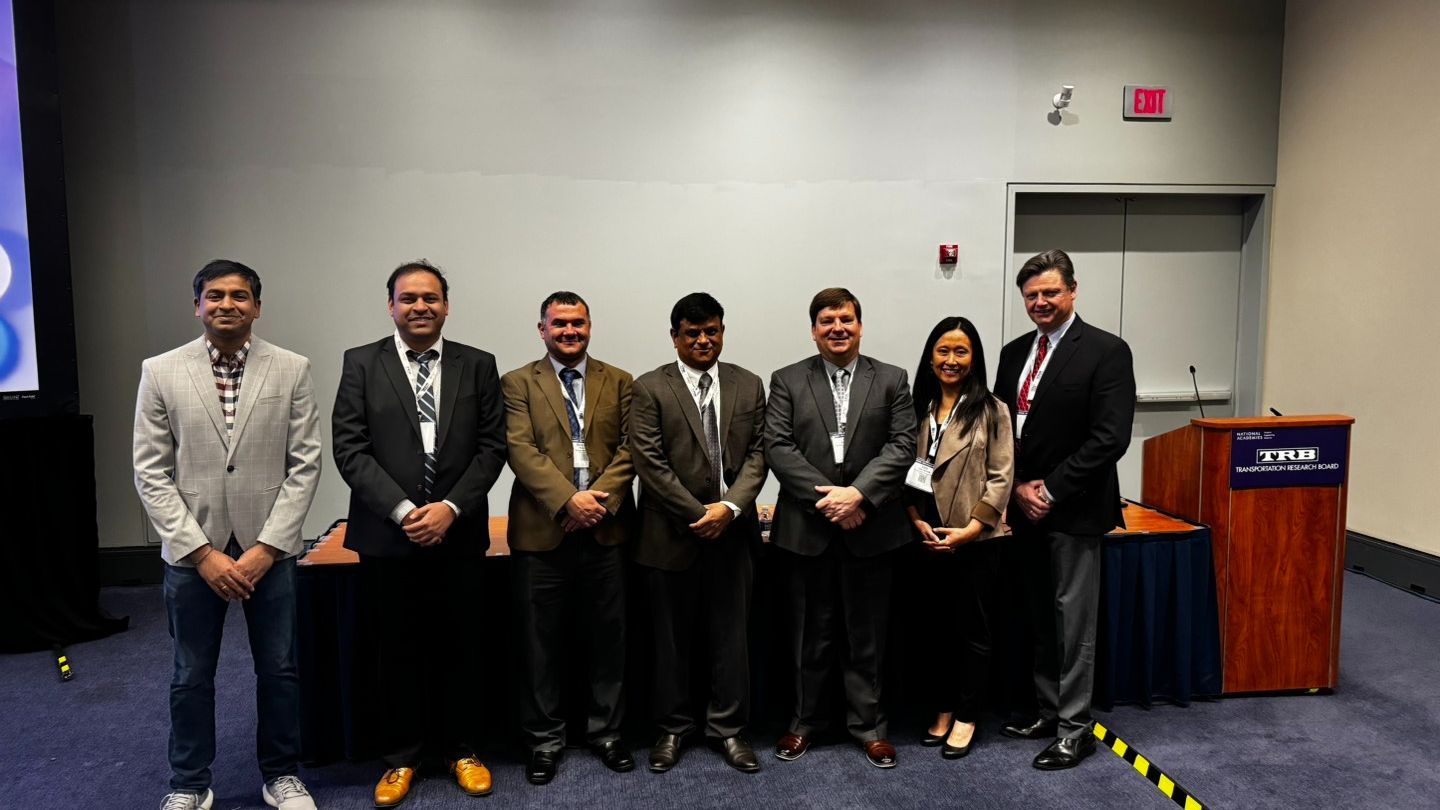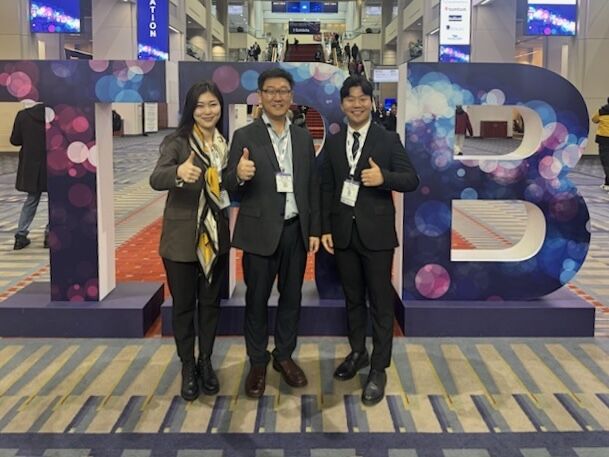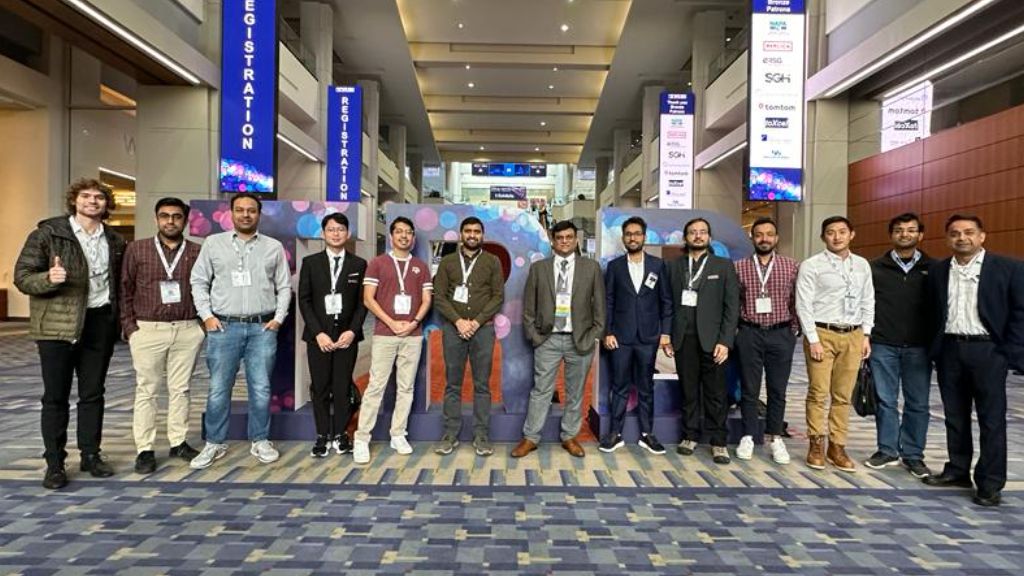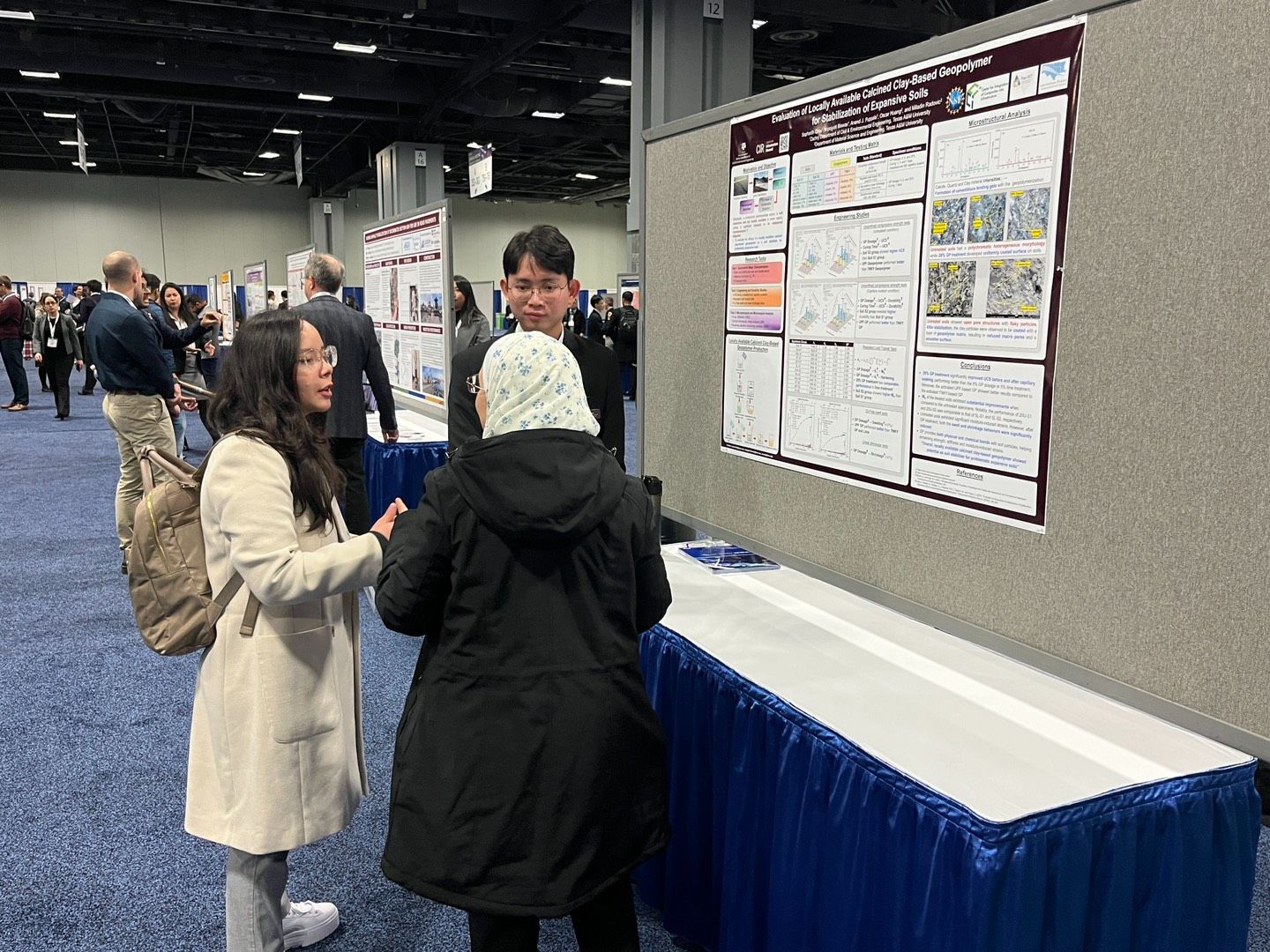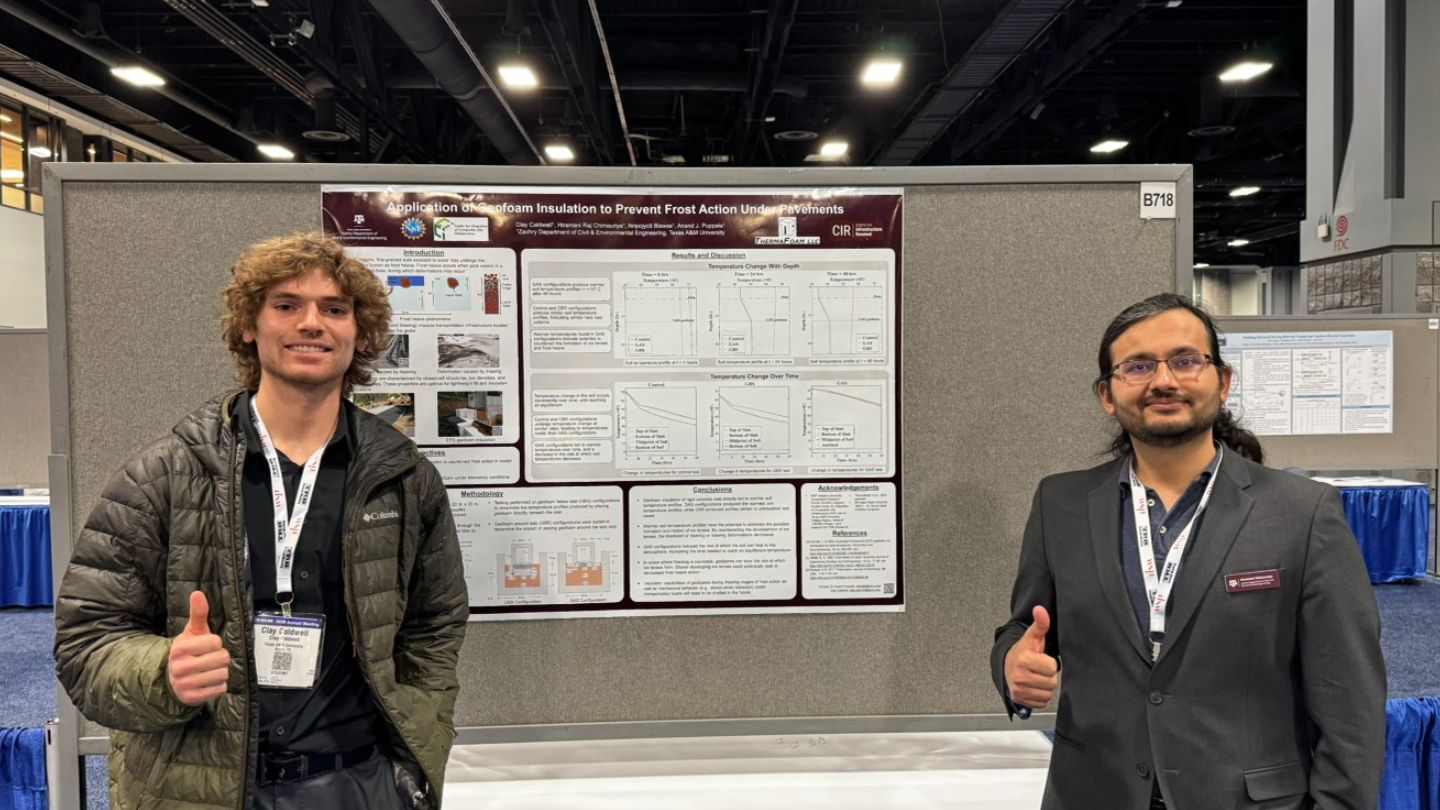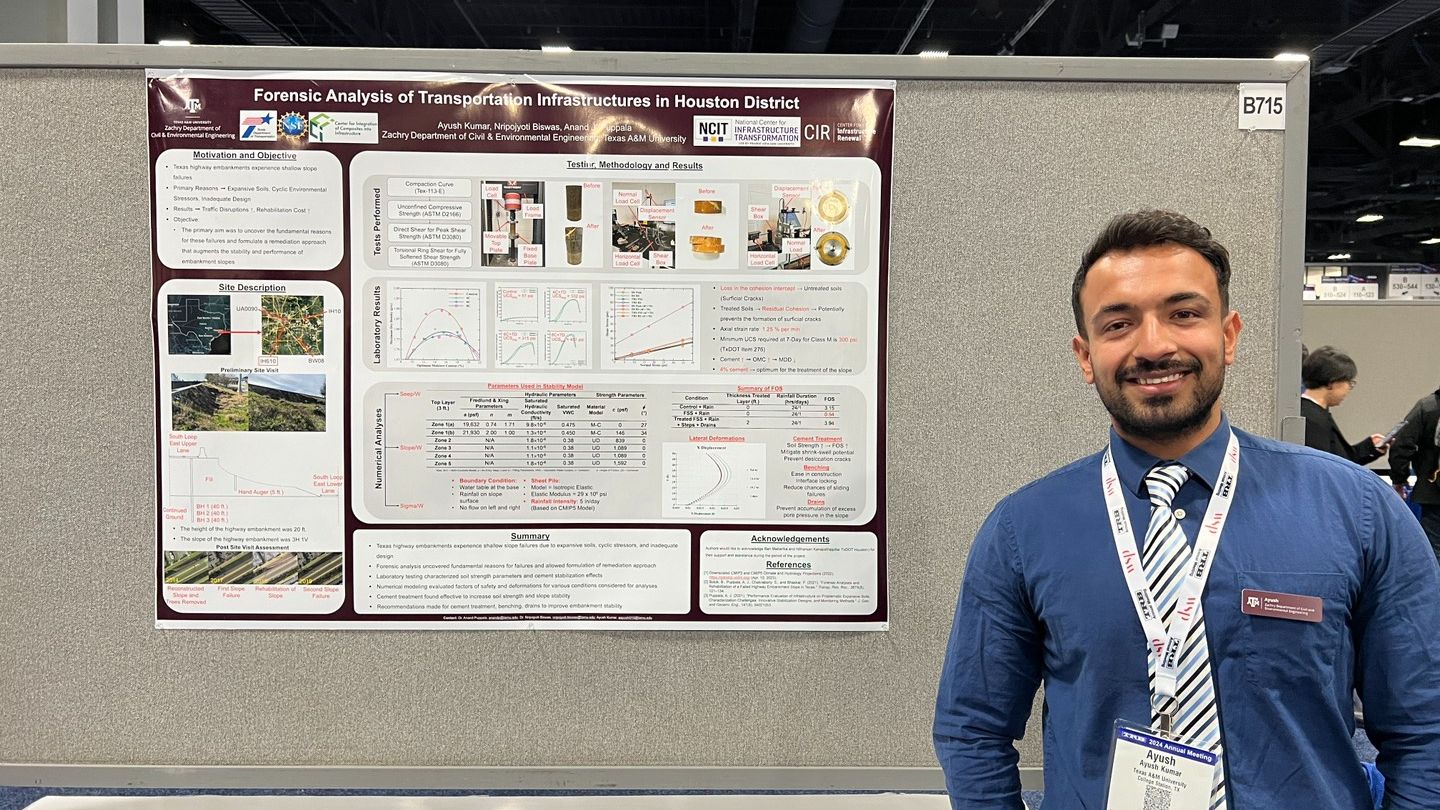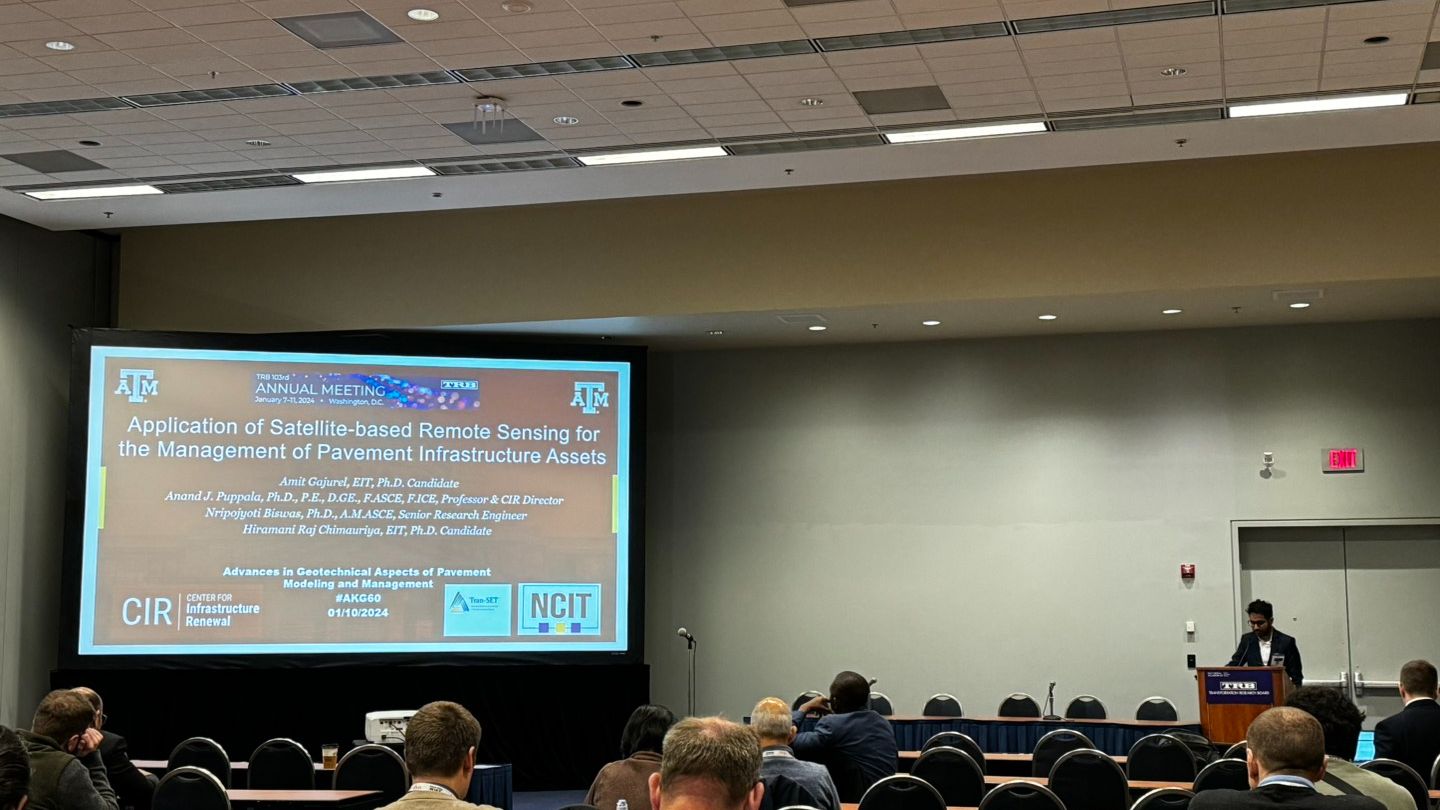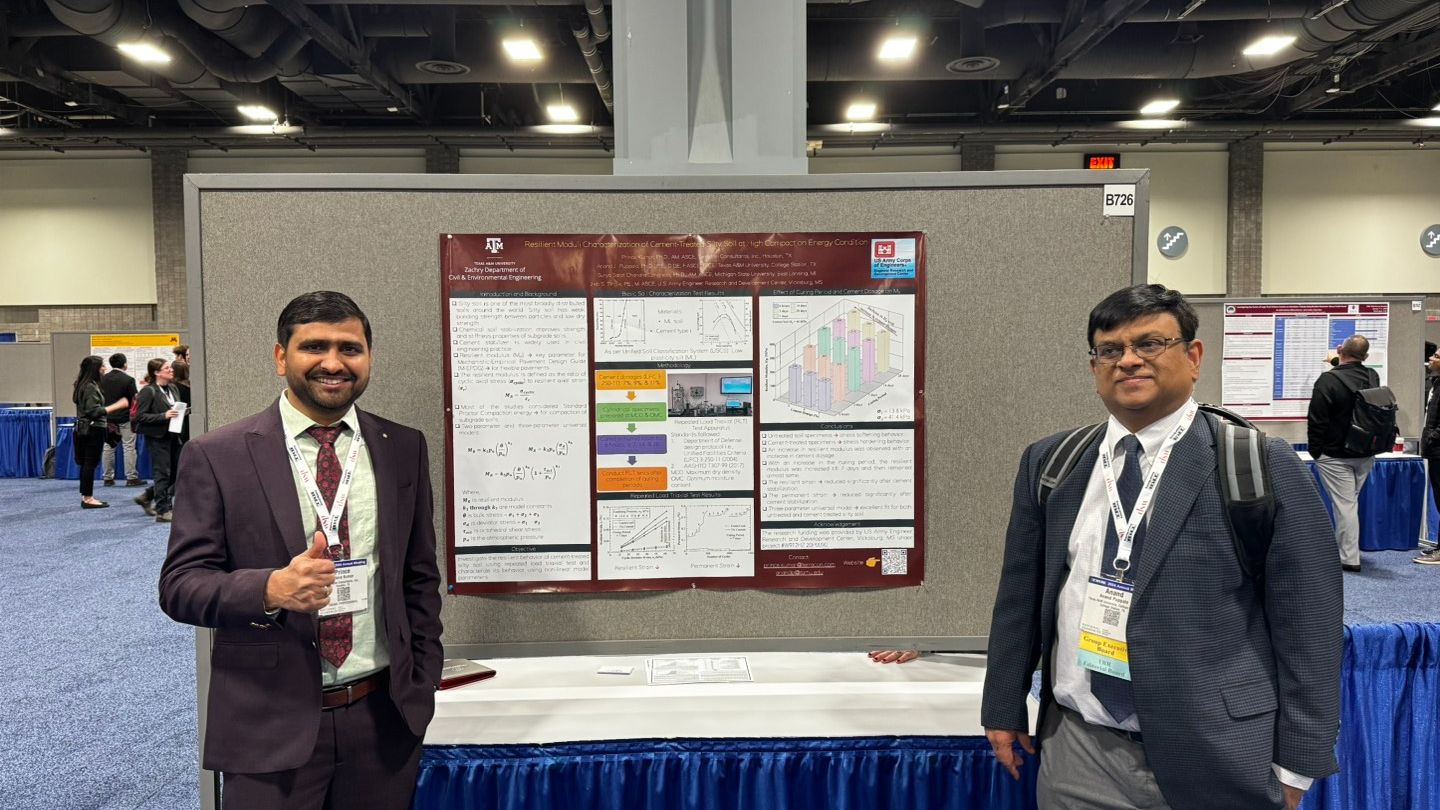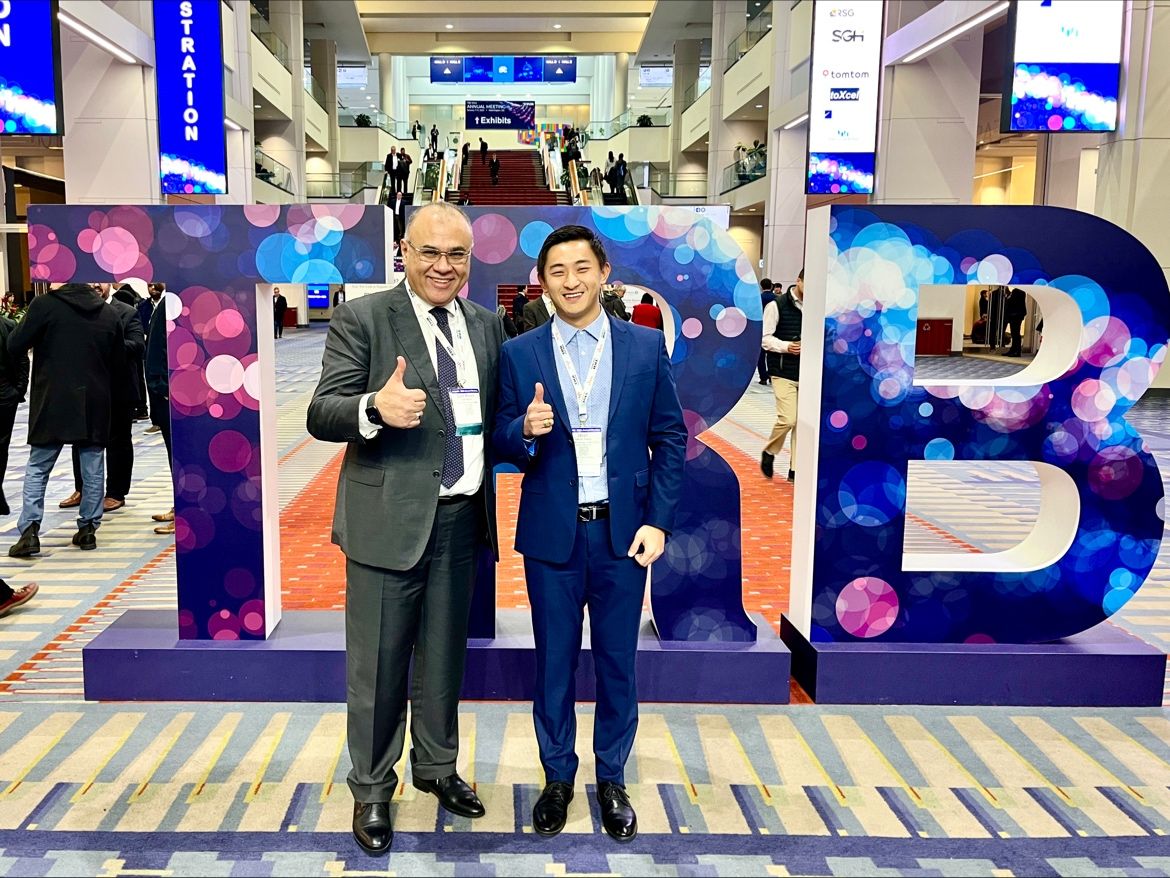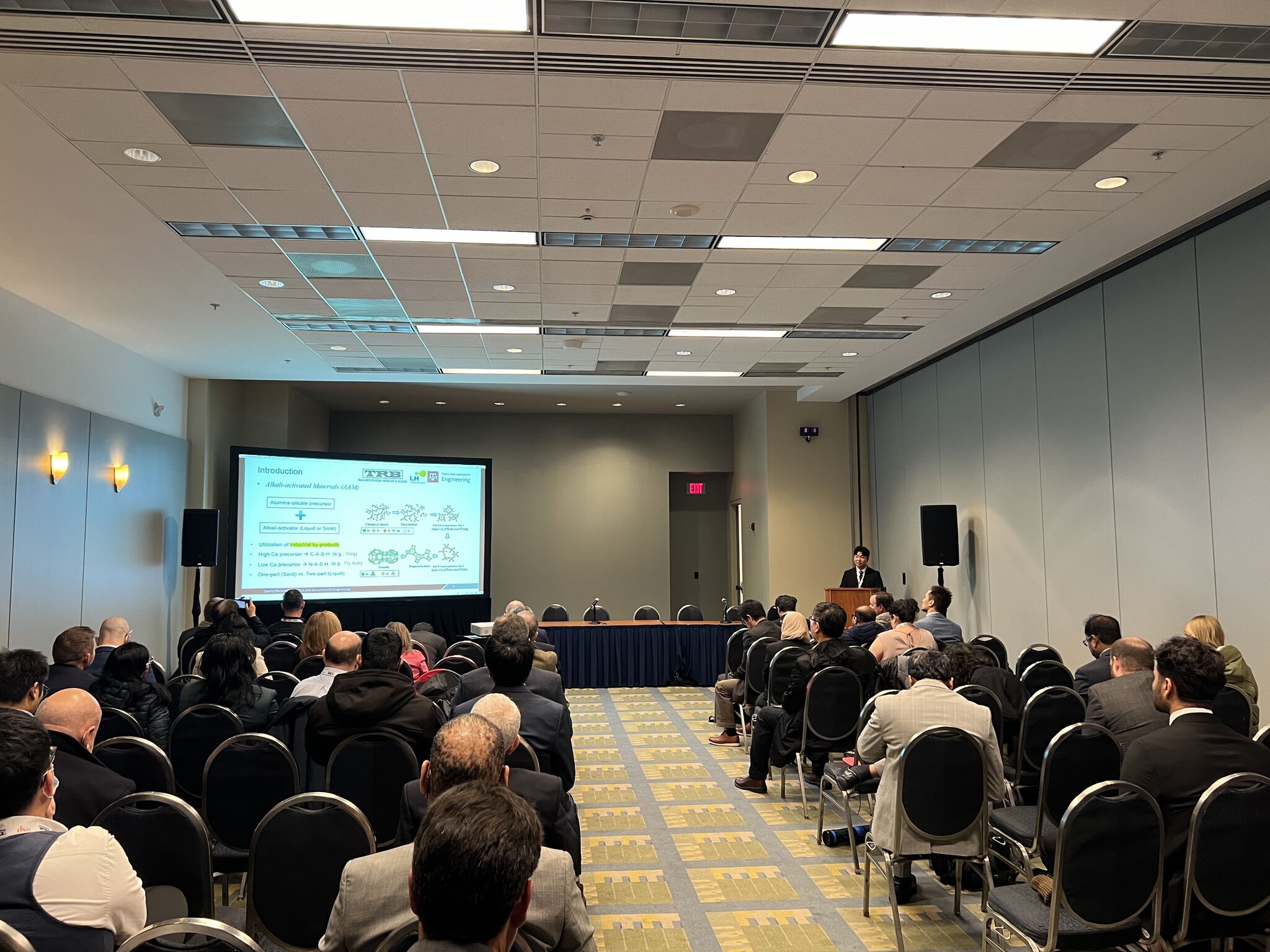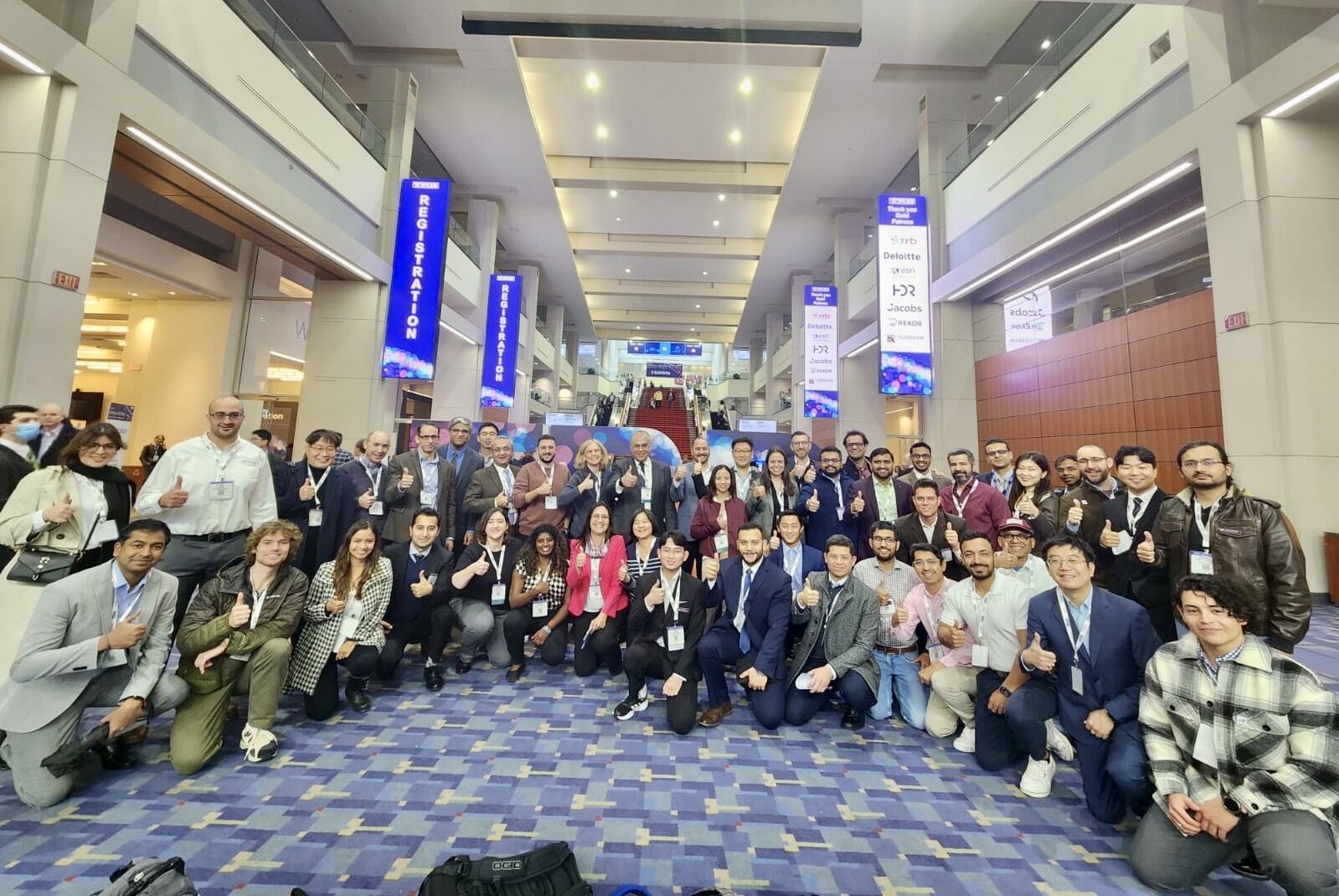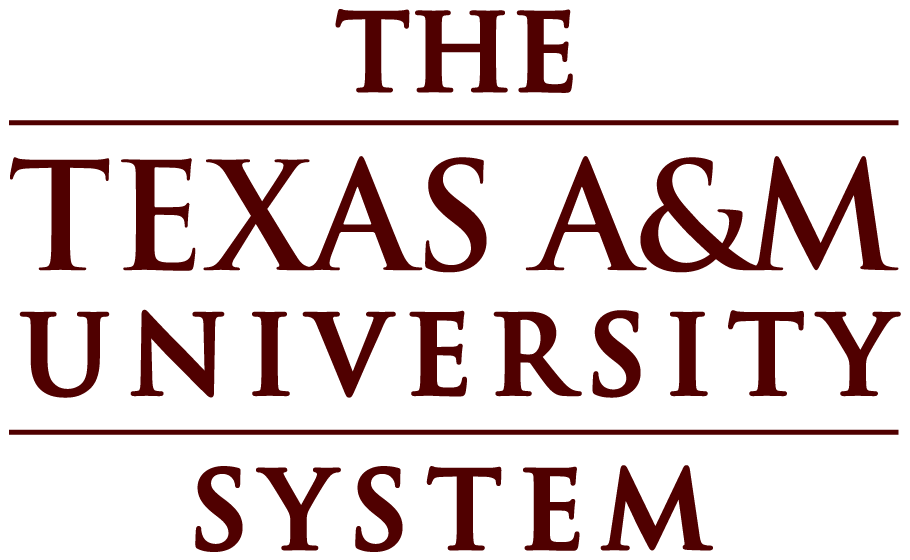The Texas A&M University College of Engineering Faculty Awards Banquet, held on April 2, 2024, was a momentous occasion, and many distinguished faculty members affiliated with the Center for Infrastructure Renewal (CIR) were honored with prestigious awards. Their remarkable contributions to research, teaching, and service were celebrated, reaffirming their commitment to excellence within the academic community.
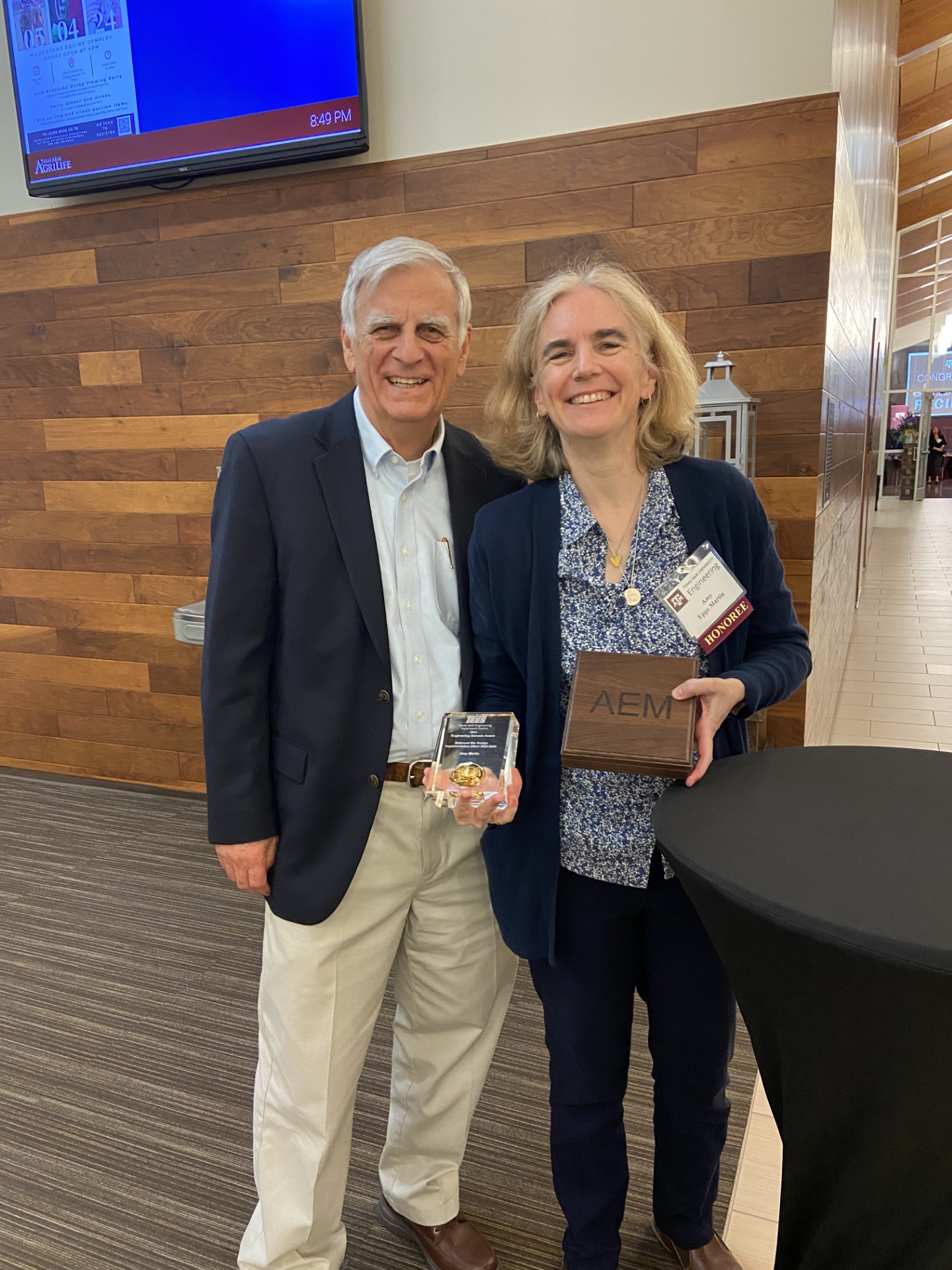
CIR researchers Dr. Amy Epps-Martin, Dr. Homero Castaneda-Lopez, Dr. Jeffrey Bullard, Dr. Katherine Davis, Dr. Maria Koliou, Dr. Petros Sideris, Dr. Zachary Grasley and Dr Anand Puppala received Genesis awards for their outstanding research efforts. Additionally, Dr. Amy Epps Martin received the prestigious A.P. & Florence Wiley Professorship II in the Zachry Department of Civil and Environmental Engineering, and Dr. Katherine Davis was honored with the Dean of Engineering Excellence award for her exceptional contributions to the field.
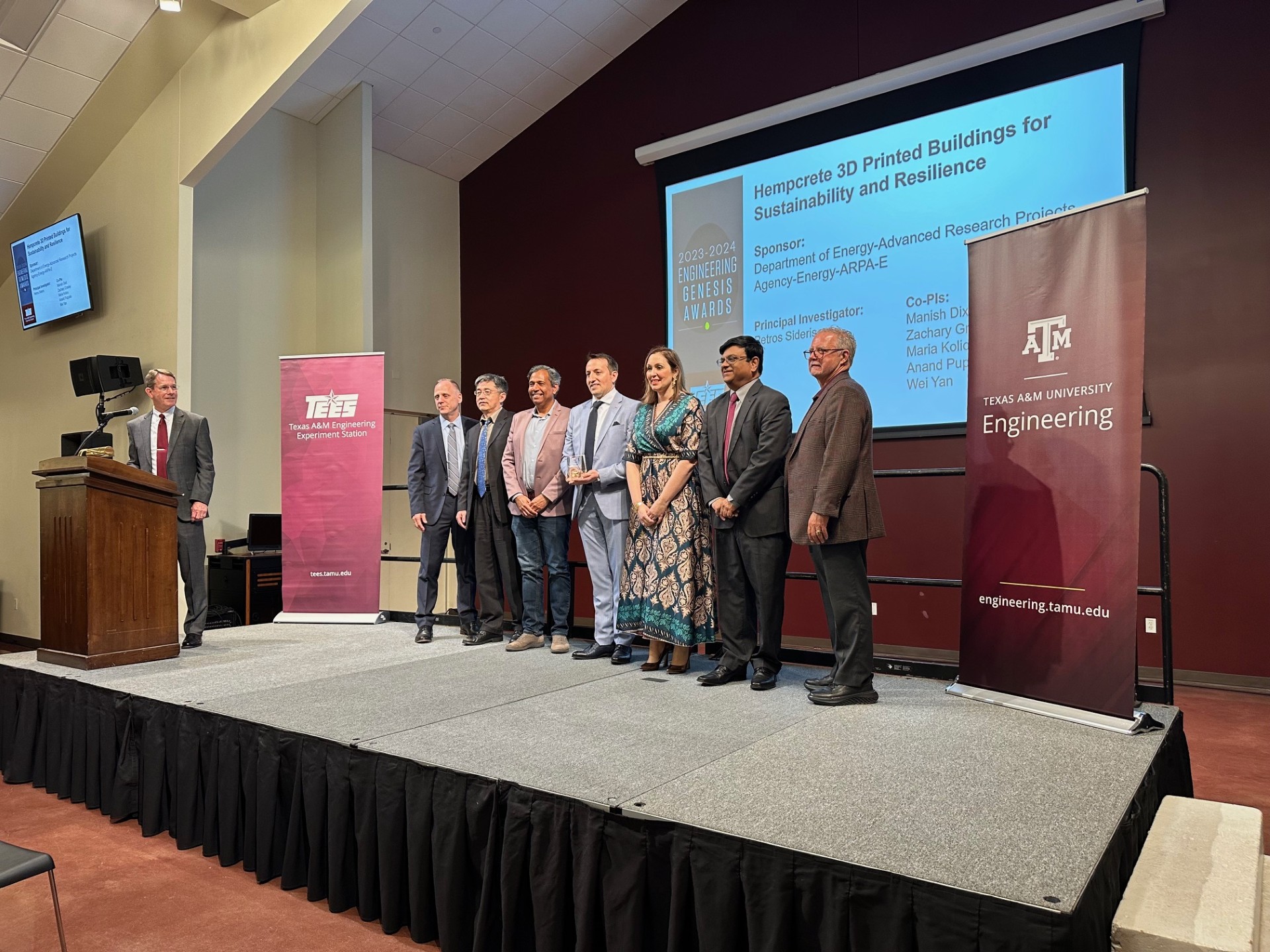
Dr. Anand Puppala, the Director of the Center for Infrastructure Renewal (CIR), received a total of six Genesis awards – four as a Principal Investigator (PI) and two as a Co-PI. These awards recognize CIR’s teams from both TTI and TEES and their commitment to excellence in research, and workforce training activities.
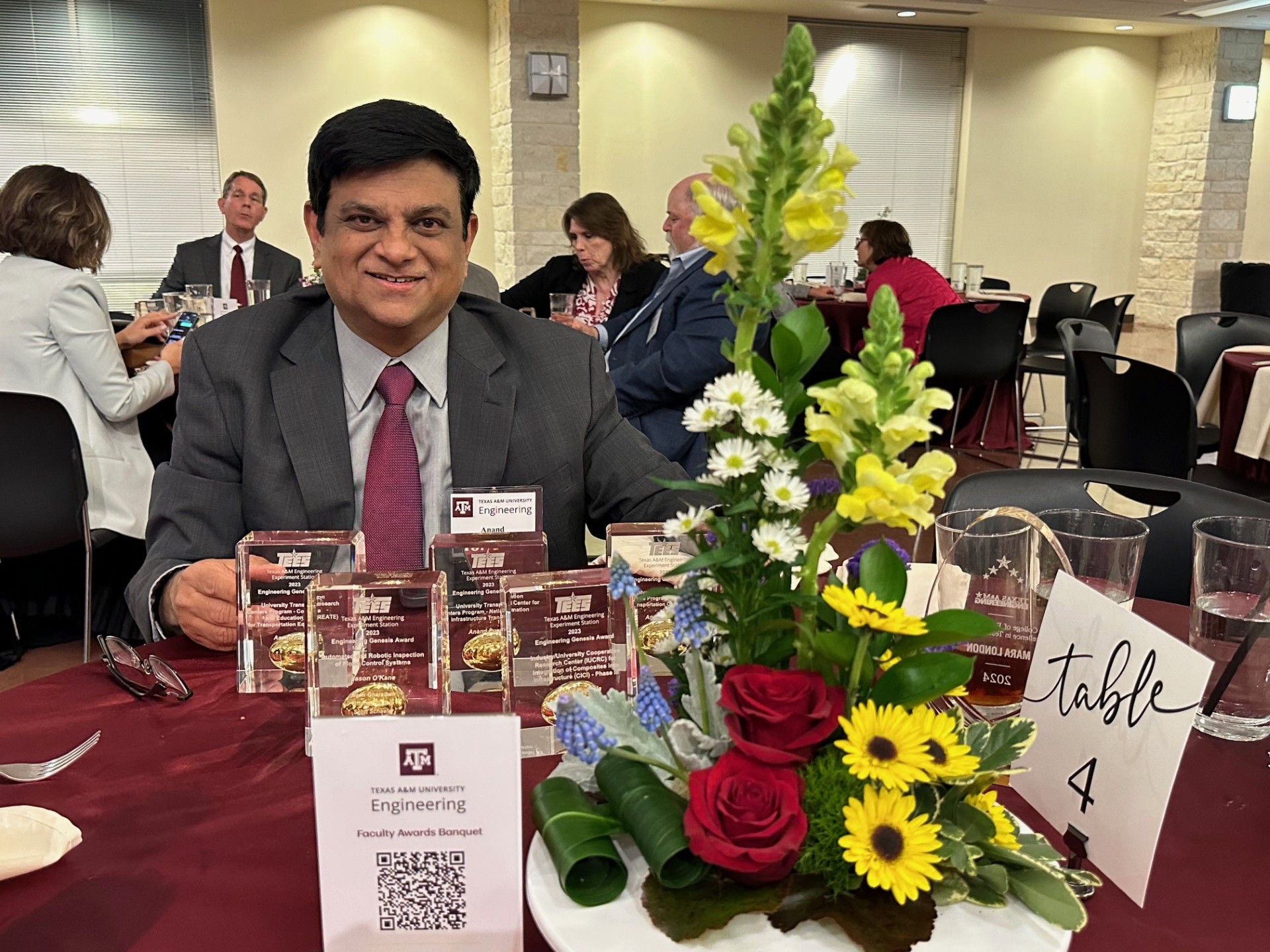
Please take a moment to celebrate with us and recognize the awardees:
Professorship Appointments
Amy Epps Martin
A.P. and Florence Wiley Professorship II in the Zachry Department of Civil and Environmental Engineering
Dean of Engineering Excellence Awards
Katherine Davis, Department of Electrical and Computer Engineering
Associate Professor Level
Engineering Genesis Award for Multidisciplinary Research Recipients
This award was created to honor Texas A&M Engineering Experiment Station (TEES) researchers who have secured a grant of $1 million or more for a research project. CIR Affiliated Faculty are denoted with an asterisk (*)
PI: Jeffrey Bullard*, Co-PIs: Satish Bukkapatnam, Zachary Grasley*, Zhijian Pei, Petros Sideris*, Kumbakonam Rajagopal
“Design and Modeling of Ultra-High-Performance Concrete for Additive Construction”
PI: Katherine Davis*, Co-PI: Ana Goulart
“SCORE-Physics-Aware and AI-Enabled Cyber-Physical Intrusion Response for the Power Grid”
PI: Arum Han, Co-PIs: Paul Defigueiredo, Arul Jayaraman, Xiaoning Qian, Homero Castaneda-Lopez*, Jason Gill, Mei Liu
“Microbes Achieve Resistance to MicroOrganism-influenced Rust (μARMOR): An Integrated Platform for Defeating Corrosion”
PI: Amy Epps Martin*
“Balanced Mix Design Implementation Effort 2022-2025”
PI: Jason O’Kane, Co-PIs: Nasir Gharaibeh, Anand Puppala*, Scott Schaefer
“Automated and Robotic Inspection of Flood Control Systems”
PI: Anand Puppala*
“Industry/University Cooperative Research Center (IUCRC) for Integration of Composites in Infrastructure (CICI) — Phase III”
PI: Anand Puppala*
“University Transportation Centers Program — National Center for Infrastructure Transformation”
PI: Anand Puppala* Co-PIs: James Kaihatu, Jens Figlus
“University Transportation Centers Program — Coastal Research and Education Actions for Transportation Equity (CREATE)”
PI: Anand Puppala*, Co-PI: Maria Koliou*
“University Transportation Centers Program — South Plains Transportation Center (SPTC)”
PI: Petros Sideris*, Co-PIs: Manish Dixit, Zachary Grasley*, Maria Koliou*, Anand Puppala*, Wei Yan
“Hempcrete 3D Printed Buildings for Sustainability and Resilience”
We extend our deepest congratulations to you all! Thank you for all your hard work and dedication to the infrastructure industry in so many ways!
